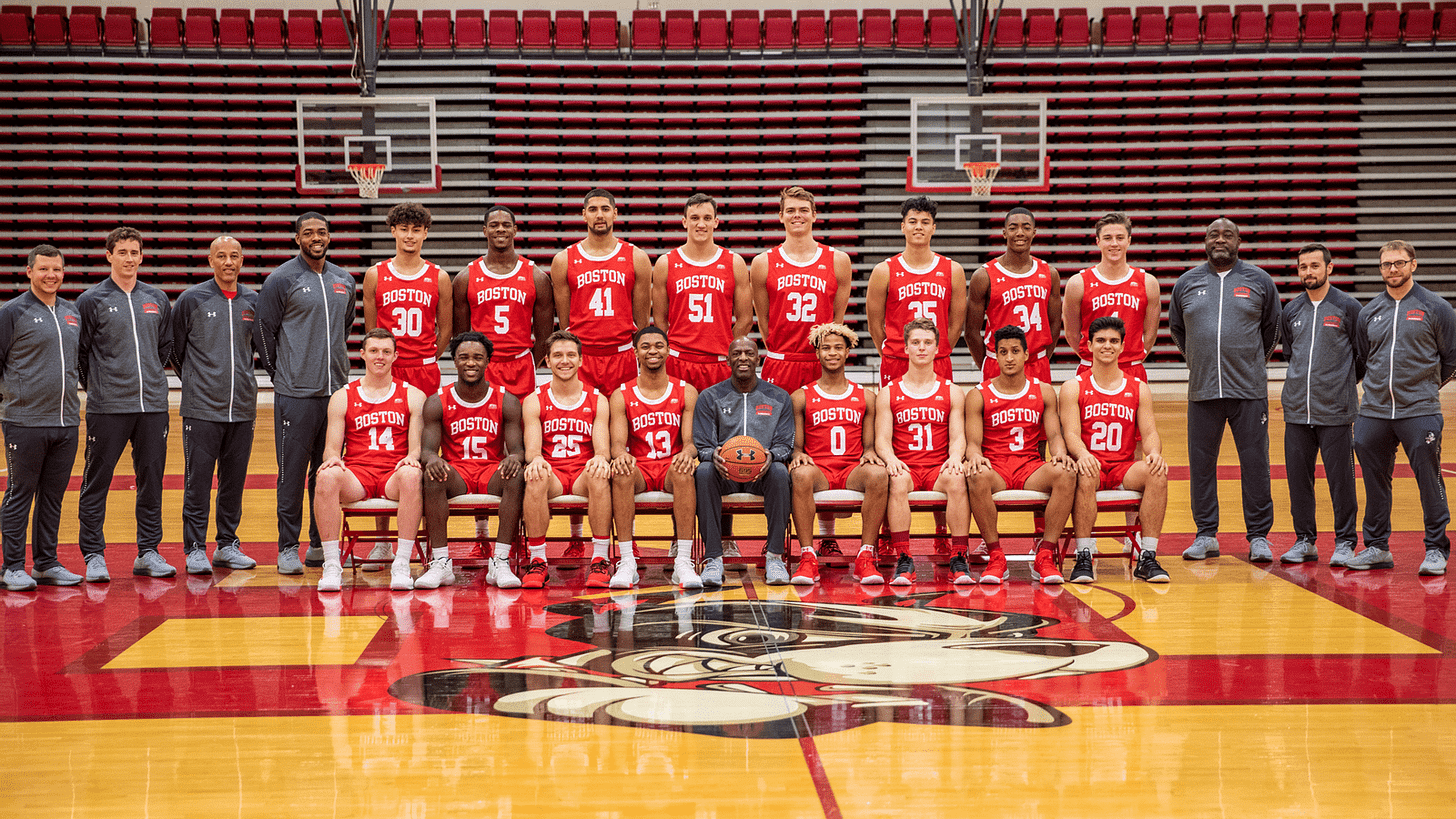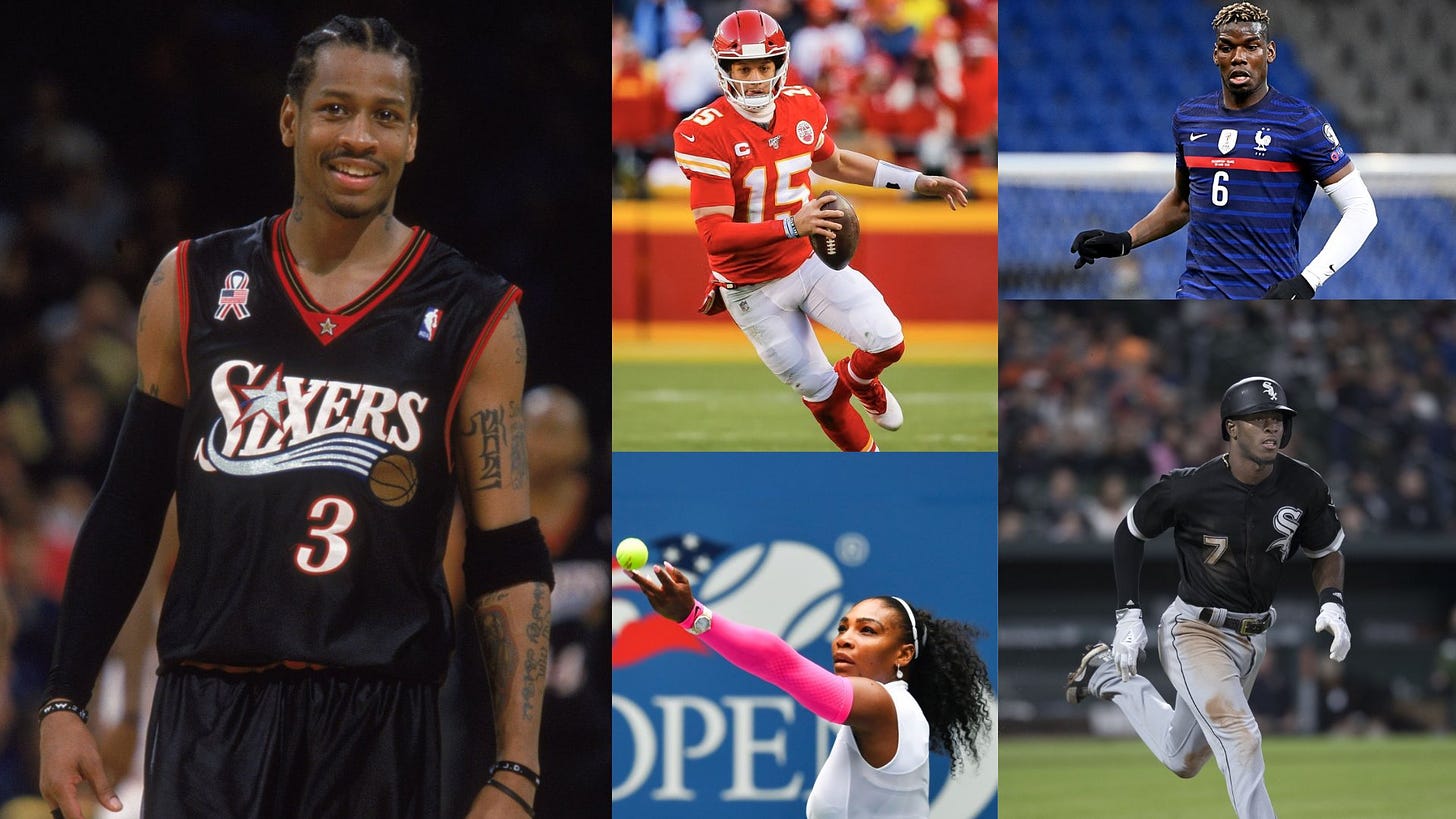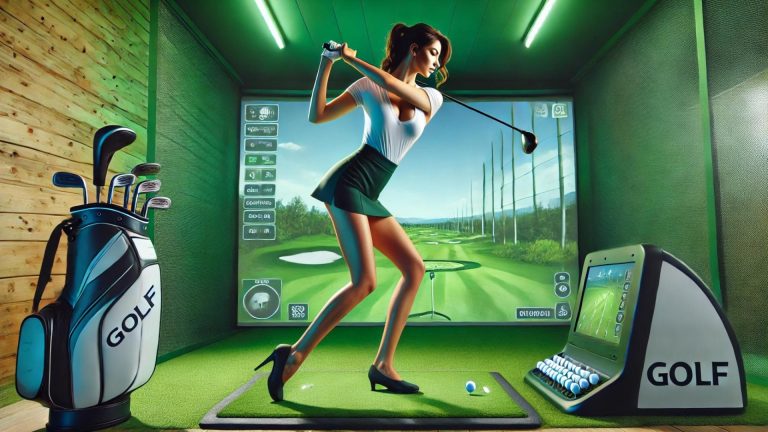It’s impossible to talk about basketball without landing on its phenomenon beyond the court.
The sport is embedded in culture:
- Wearing Jordan’s as dress shoes
- Entire social media accounts dedicated to hoop fashion
- College students rocking mesh basketball jerseys at parties
- Football teams having Jordan (a basketball player) as their sponsor.

Basketball profoundly impacts various areas of society — music, art, and fashion along with being a powerful platform for social and community development.
And other sports (like soccer) are looking to tap into this power.
Let’s Dive In 👇
Social and Cultural
Basketball is great because it welcomes everyone to participate — regardless of size, color, social class, or belief.
Our championship season at Boston University featured players from 12 different states with every race and region of the world represented.

Other basketball and culture synergies:
- Urban art — graffiti walls serving as backdrops at streetball games.
- Players using their platforms for change — addressing social issues and giving back to their communities through charitable work.
- Hip-hop music — artists often make references to basketball and its players in their songs.
- Iconic films — such as “White Men Can’t Jump,” “Space Jam,” and “Coach Carter.”

- Signature shoes — Air Jordans have reached iconic status and are sought after by sneaker enthusiasts worldwide.
- Streetwear fashion — basketball players and their unique styles serve as inspiration for urban fashion trends.
And wrapping it off…
In 2015, the University of Michigan became the first football team to wear Jordan gear (followed by Oklahoma, Florida, UCLA, and Howard).
Other Sports Adopting Basketball
Allen Iverson began using a basketball sleeve during the 2000-01 season due to bursitis in his right elbow.
Fans started wearing the sleeves as a fashion statement, and by 2008, the sleeves were the most popular non-apparel items sold by the league.
Now you see them in nearly every other sport.

The same thing happened with tights many years before…
The first wave is attributed to Jerry Stackhouse, a vocal fan of the health benefits of tights (warmer muscles).

The trend was quickly squashed by a league-wide ban on full-length tights (and reversed not long after).
Basketball sets many trends — in both culture and in other sports.
Access Is Key
One of the reasons basketball has spread so rapidly across the States is because of how accessible it is.
Raw estimates suggest that 75-80% of Americans can walk to a basketball hoop.
The sport does not require a ton of players or equipment (play solo or up to 5on5). Alternative versions of the game like streetball have emerged at this intersection.

For other sports to keep growing in the States…they need to become more democratic, urban, and less expensive to play.
Using soccer as an example….
That means more streetball such as futsal and versions of the game you see in South America and Europe.
Several factors are working in favor of this:
- The U.S. Soccer Federation plans to build 1,000 mini-pitches across the country by 2028.
- By the year 2060, over 1 in 4 Americans are likely to be Latino.
- 7vs7 soccer tournament with a $1M prize is helping expand the game.

There’s a real chance for soccer to shape culture, music, and fashion — just like basketball did over the years.
Soccer 3.0
This timeline illustrates the waves perfectly…
- Soccer 1.0 was the North American Soccer League with players like Pele introducing the game to America.
- Soccer 2.0 was the 1994 U.S. World Cup and the launch of the MLS in 1996. This led to David Beckham, more stadiums being built, and the rise of the USL.
- Soccer 3.0 is what is coming with Copa America, 2026 World Cup, 2028 LA Olympics, and even a potential Women’s World Cup on U.S. soil.
The question becomes…
Will soccer hit its peak during this time? Or will it break through to become a top 3 sport in America?
Looking Ahead
Basketball has had several advantages versus other sports:
- Golf and hockey are expensive.
- Baseball and football require several pieces of equipment, players, and large swaths of real estate.
- Tennis courts are pretty much nonexistent in poor neighborhoods.
- And soccer is in the early stages of catching on in America.

We’ll know the “soccer wave” is here when we see more Messi jerseys at college frat parties and indoor soccer shoes being worn for fashion.
I think there are massive opportunities for those (especially in marketing) that can bridge the gap between corporate and culture.









